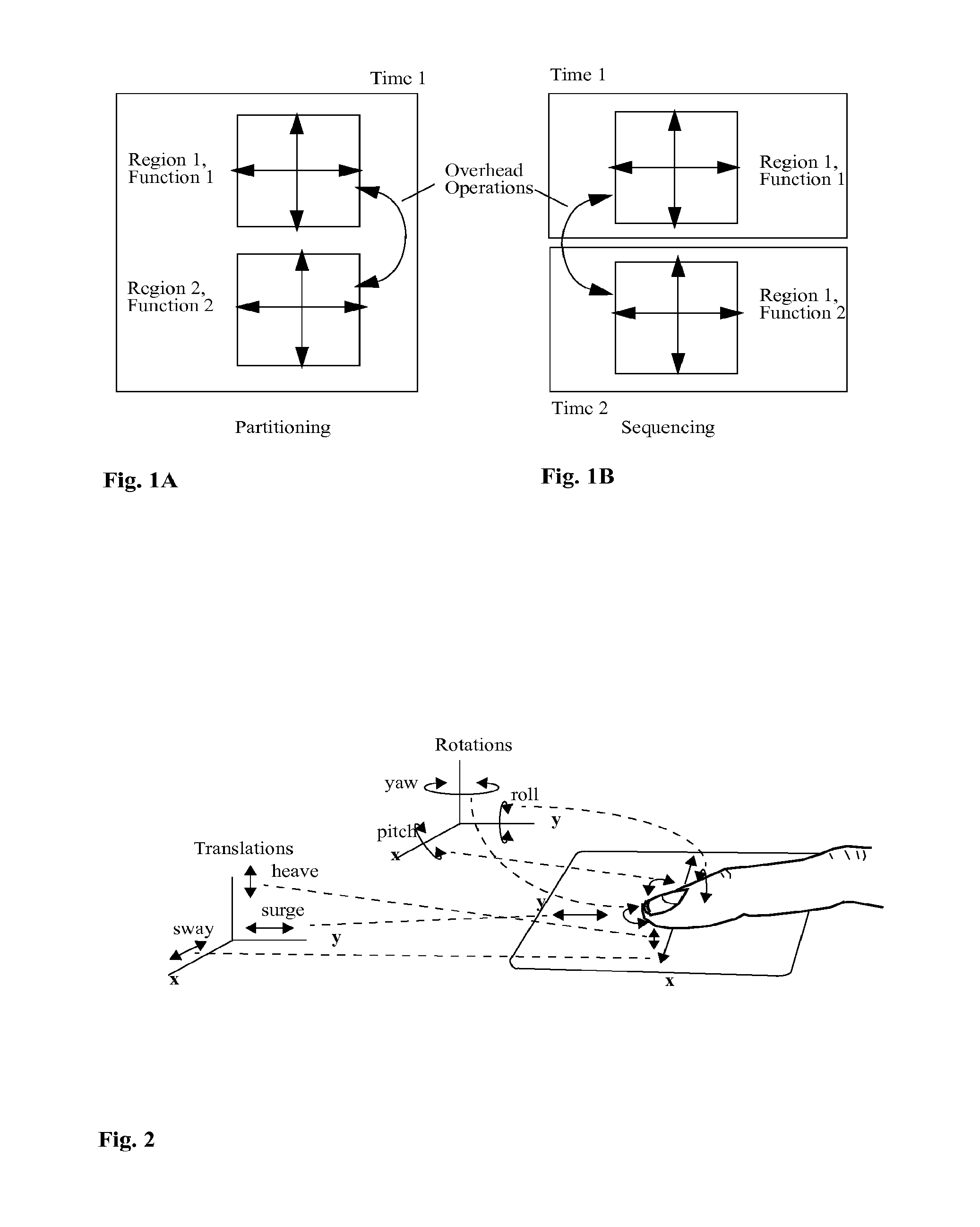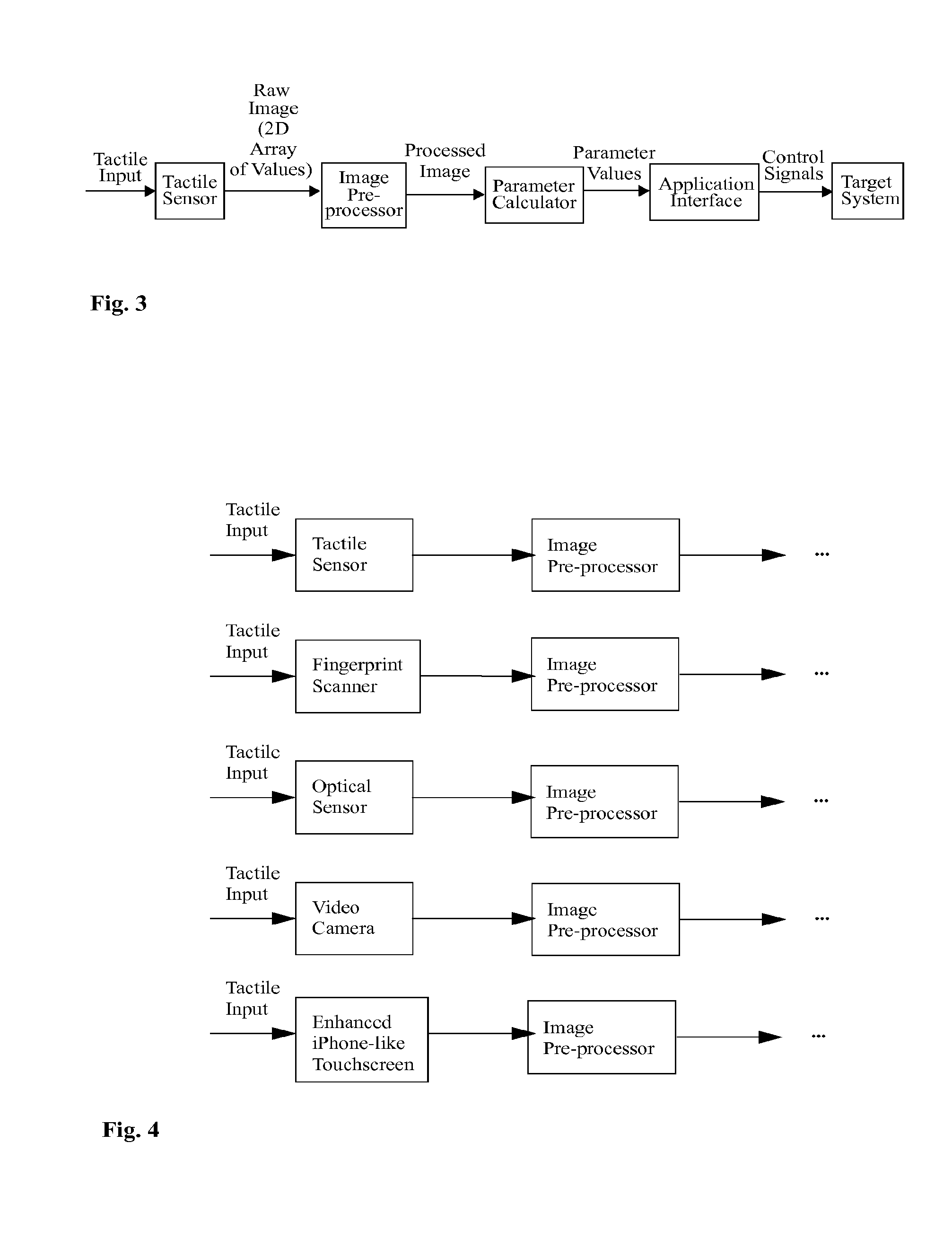Additional Touch-Gesture Sensors for Rear or Sides of Mobile Devices
a technology for mobile devices and sensors, applied in the field of additional touch-gesture sensors for rear or side of mobile devices, can solve the problems of low-dimensionality (ldp, small-format problem (sfp), lack of high-dimensional pointing devices
- Summary
- Abstract
- Description
- Claims
- Application Information
AI Technical Summary
Benefits of technology
Problems solved by technology
Method used
Image
Examples
Embodiment Construction
[0054]Introduction
[0055]Partitioning and sequencing are illustrated schematically in FIG. 1. In both cases, overhead operations, represented by the curved arrows, are required to change how the dimensions of a conventional pointing device are assigned so it can be used to carry out two different functions, which together require varying more dimensions than the pointing device provides. And in both cases, the overhead operations can interfere with the user's ability to use computing devices to carry out tasks. The reason is that overhead operations multiply the number of movements the user must make, and can increase the cognitive load on the user, since they may force her to repeatedly divert her attention from carrying out a task, such as editing a document, to the mechanics of doing so.
[0056]But there is an important asymmetry between partitioning and sequencing. Because multiple partitions can be displayed at one time, partitioning can provide visual cues about the context in wh...
PUM
 Login to View More
Login to View More Abstract
Description
Claims
Application Information
 Login to View More
Login to View More - R&D
- Intellectual Property
- Life Sciences
- Materials
- Tech Scout
- Unparalleled Data Quality
- Higher Quality Content
- 60% Fewer Hallucinations
Browse by: Latest US Patents, China's latest patents, Technical Efficacy Thesaurus, Application Domain, Technology Topic, Popular Technical Reports.
© 2025 PatSnap. All rights reserved.Legal|Privacy policy|Modern Slavery Act Transparency Statement|Sitemap|About US| Contact US: help@patsnap.com



